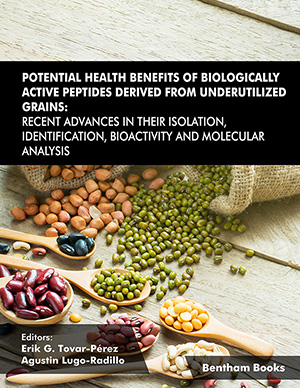Abstract
Biologically active peptides (BAPs) have gained significant research attention in the last few years due to their potential human health benefits and diverse applications. Moreover, the use of food by-products or food wastes as a protein source is highlighted as a viable technological alternative to produce BAPs, reducing food losses. However, the functionality of BAPs depends on the protein source, synthesis method, degree of hydrolysis, molecular weight, purity, and amino acid sequence and composition. Therefore, multiple efforts in the purification and molecular characterization of these compounds have been reported in recent years to know their molecular structure complexity and related bioactivity. BAPs can be obtained from different protein sources and synthesized by chemical, biological, and physical routes, alone or combined, which significantly influence their degree of hydrolysis and molecular weights. Additionally, advanced analytical techniques have been used to separate and identify BAPs. In this context, ultrafiltration membrane systems and electrodialysis systems are the most common methods used to separate BAPs with desirable molecular weights.
Likewise, multiple chromatographic techniques (HPLC, HPLC-MS/MS, UPLC/MS, RT-HPLC, and ion exchange and exclusion) have been widely used for quantitative, qualitative, and sequencing analysis of BAPs. Furthermore, emerging computational and statistical tools (in silico analysis) have been used to predict, sequence, and characterize BAPs using chemometric and chemoinformatic data. These tools facilitated the discovery and analysis of new peptides with desirable applications and functionality. Therefore, this chapter aims to discuss the current information about the molecular characterization of BAPs.
Keywords: Amino acid composition, Bioinformatics, Chromatographic s eparation, Electrodialysis, Electrophoresis, Hydrolysates, Hydrolysis degree, Mass spectrometry, Molecular docking, Peptide characterization, Peptide purification, Peptide sequence, Peptidomics, Proteomics, Ultrafiltration.






















